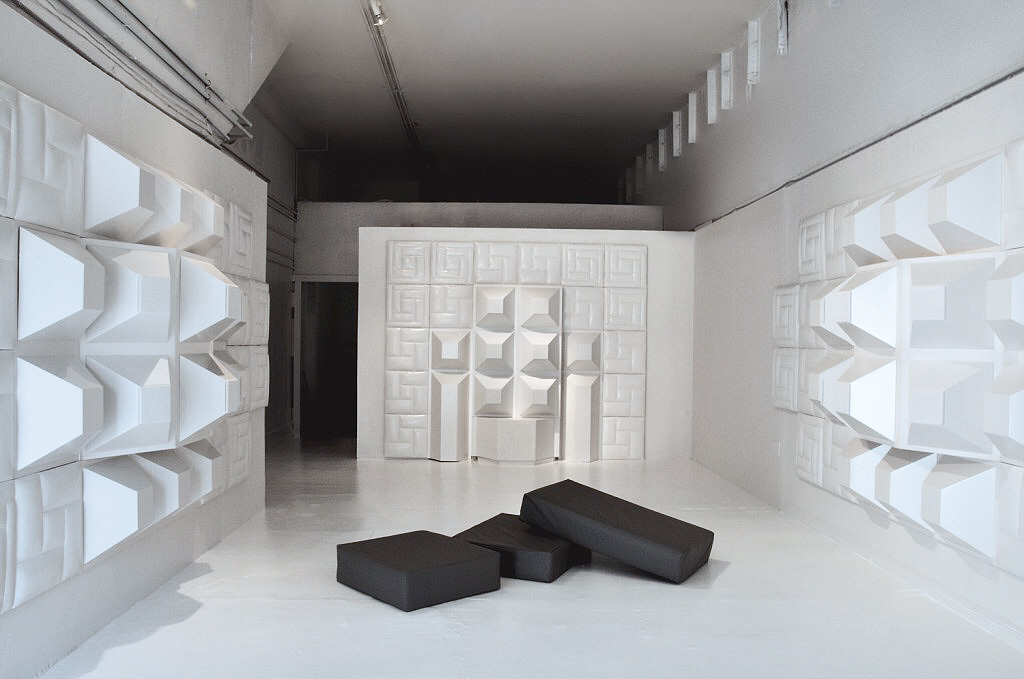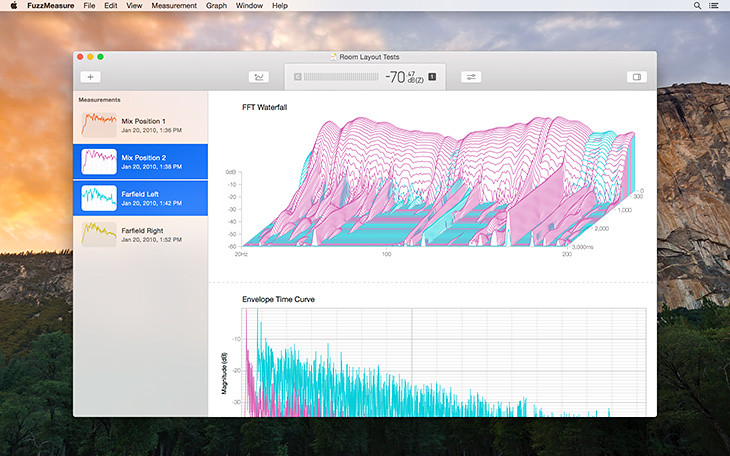

There should be more significant reflections that are less than 25-30dB down relative to the direct signal assuming that this is still a 'to be treated' room. The smaller the coherence, the less meaningful your data is at a particular frequency.I will note that I have questions regarding this measurement. The Coherence function can also be used to verify the quality of your measurement, as a function of frequency. If you don't have valid measurement data in the DFFT Analyzer, you can't expect to get meaningful results when you load it into the Room Analyzer. If you are familiar with ETC or squared impulse response curves, I would recommend that you select the Squared IR function in the Display tab and make sure you see the kind of acoustic decay you would expect in your measurement. (The default number of averages, 10, may be overkill, but it won't hurt your measurement.)Īlso, before capturing the data in the DFFT Analyzer, I would recommend that you inspect your measurement data to be sure it looks right. Also, for room measurements, you might want to set the averaging type to Linear and let the analysis complete (and stop on its own) before you capture the data. If you have any other tools in your project, I would recommend just starting and stopping the DFFT Analyzer directly, rather than all tools simultaneously. Mic position? Polar pattern? Something in the excitation? This is a sanctuary that has a fairly low noise floor (lights, fans and organ turned off during measurement), and a "starter pistol" excitation produces a decay that lasts roughly 4-5 seconds to the naked ear.

The T measurements that I did get are quite different from a sweep done with "FuzzMeasure" and all seem extremely short.

Nothing captured in C80, nothing for 4 areas of C50, NO T60 measurements, several bands empty in T20 and T30. There are LOTS of n/a boxes in the analysis. Next I created a Room Analyzer and selected the captured measurement. While the excitation signal was in progress, I selected Control->Capture all Data. I confirmed that I could hear the repeating excitation signal in the room and that the mic was picking it up. Next I selected Control->Start All Tools. Under the "Excitation" tab, I Selected the appropriate output channel.sine sweep.Logarithmic. In the bottom drawer I set the source to the appropriate Apollo 16 input. On launching Electroacoustics Toolbox, I opened Device I/O and selected (and started) the Apollo 16 interface. The Apollo interface also fed a monitor speaker placed in the centre of the choir.
Fuzzmeasure and ir mac#
The mic went into a Millennia mic pre, then to an Apollo 16 interface, finally into a Mac laptop. To measure the room, I have placed an AKG C414 XLIIS in omni mode about 10' up and slightly behind the conductor's position (same place I set the mic array). The end result is for a Masters paper I'm writing. My goal is to measure a church where I have recorded a choir/organ ensemble.

So I'd like to start by ruling out "user error" as I am fairly new to this. I am having a great deal of difficulty getting any real results.


 0 kommentar(er)
0 kommentar(er)
